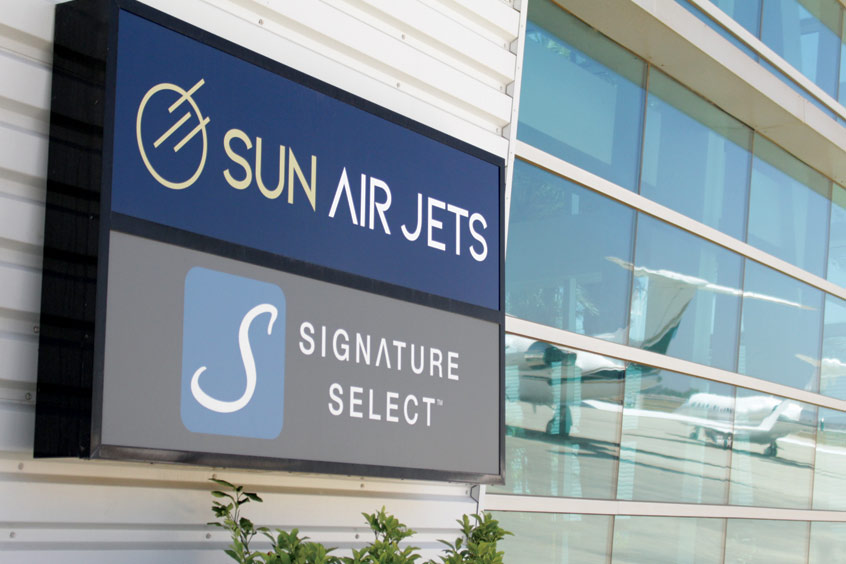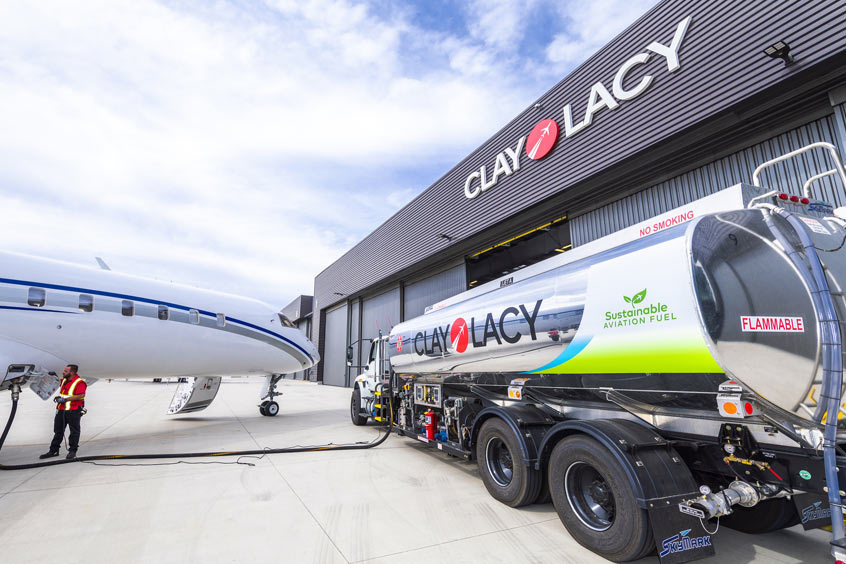ACE 2026 - The home of global charter.
• Clay Lacy Aviation
Charter
• Clay Lacy Aviation
FBO/Handler (Van Nuys)
• Clay Lacy Aviation
FBO/Handler (John Wayne Orange County / Santa Ana)
• Clay Lacy Aviation
Maintenance
• National Air Transportation Association
• Sun Air Jets
FBO/Handler (Camarillo)
BAN's World Gazetteer
• California The bimonthly news publication for aviation professionals.
The bimonthly news publication for aviation professionals.



US full service business aviation operator Clay Lacy Aviation and Sun Air Jets' Camarillo, California airport FBO have been certified as Green Aviation Businesses by the National Air Transportation Association (NATA).
NATA's new sustainability initiative was created to encourage FBOs, airports and other aviation businesses to lower their carbon footprint. Developed by a working group under NATA's Environment Committee, this free industry standard is designed to reduce greenhouse gas emissions such as CO2; to increase use of more environmentally friendly energy sources; reduce waste; and encourage sustainability operation-wide.
“NATA provides members of the business aviation community with practical tools to operate safely, improve service and foster organisation-wide sustainable practices,” says president and CEO Timothy Obitts. “Clay Lacy Aviation's innovative sustainability initiatives are a great example for the industry, and we congratulate it for being the first business aviation company to quality for certification.”
Under the leadership of James Evans, the Sun Air Jets FBO has also been working with NATA to evaluate and meet the standards, achieving Tier 1 status. “NATA is grateful to Sun Air Jets for its input in developing the standard and leadership as an early adopter. It is inspiring to see our members' enthusiasm for meeting the requirements of this sustainability standard and then raising the bar even higher for greater improvement,” adds Obitts.
Sun Air Jets director of business development Mary Brehm adds: "It is an honour to work closely with the NATA Environment Committee on this project and other environmental initiatives. Sun Air Jets is committed to further reducing the carbon footprint at its FBO and will be regularly evaluating and adjusting the baseline energy usage with a goal to achieve Tier 2 status at their next renewal.”
Clay Lacy is executing a long-term strategic plan to operate more sustainably both on the ground and in the air. The company works with fuel suppliers and aviation industry associations to foster the development and use of SAF, and facilitates carbon offset programmes for FBO customers and aircraft owners. The company has also completed installation of a 500 kW solar array at its headquarters and is preparing to break ground on two new FBOs at Oxford-Waterbury and John Wayne airports that will incorporate sustainable construction and operational practices to reduce the environmental impact of those facilities.